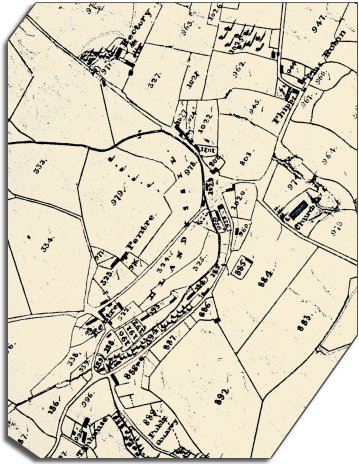
TITHE MAPS
In Victorian times almost everyone had to pay tithes to the Church of England. At the beginning of the reign the tithe became a tax on your property. The maps were drawn to see what property everybody had.

Although the original is tattered
and faded it gives us a picture of the village in the early years of Queen
Victoria's reign.
We can see from the map that there is a scatter of smaller cottages near
the stream, especially at Pentre.
The bigger houses like the Rectory and Tan House stand apart with more
space around them.
This looks like a typical small
rural Montgomeryshire community. Most of the people living here would
have made their living on the land in some way.
The 1841
census (see below) shows us however,
that there were many other people working in this small community...